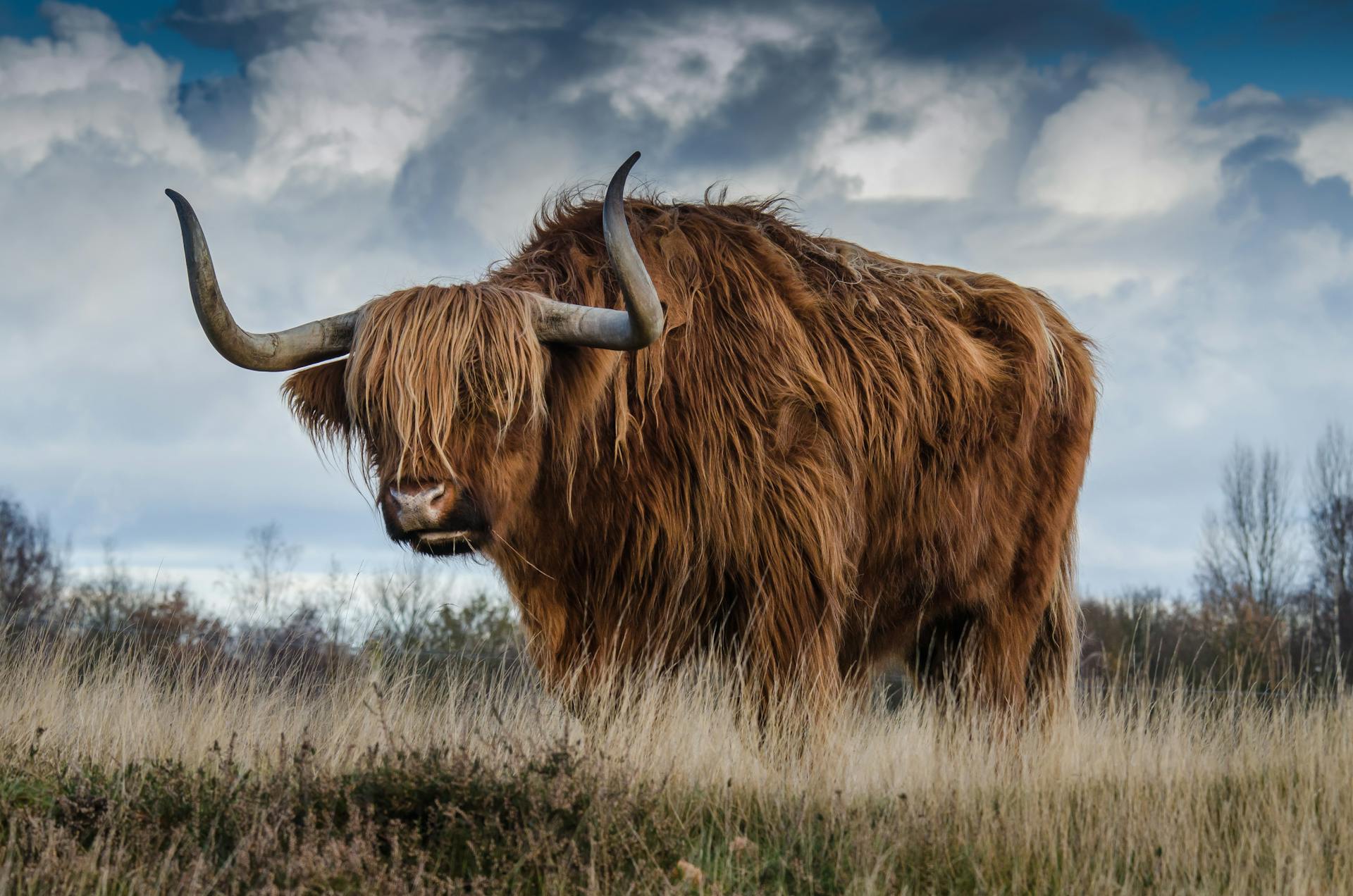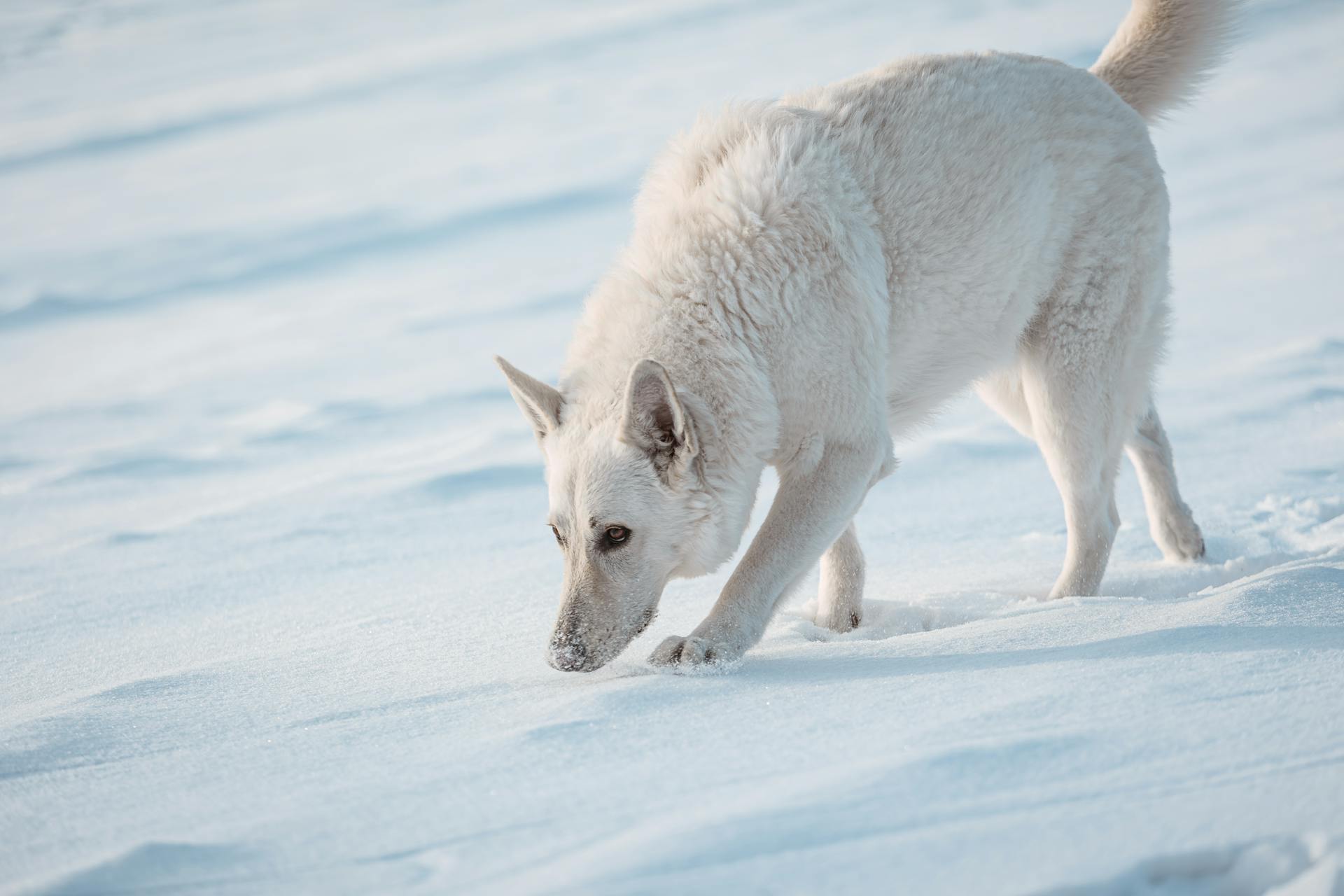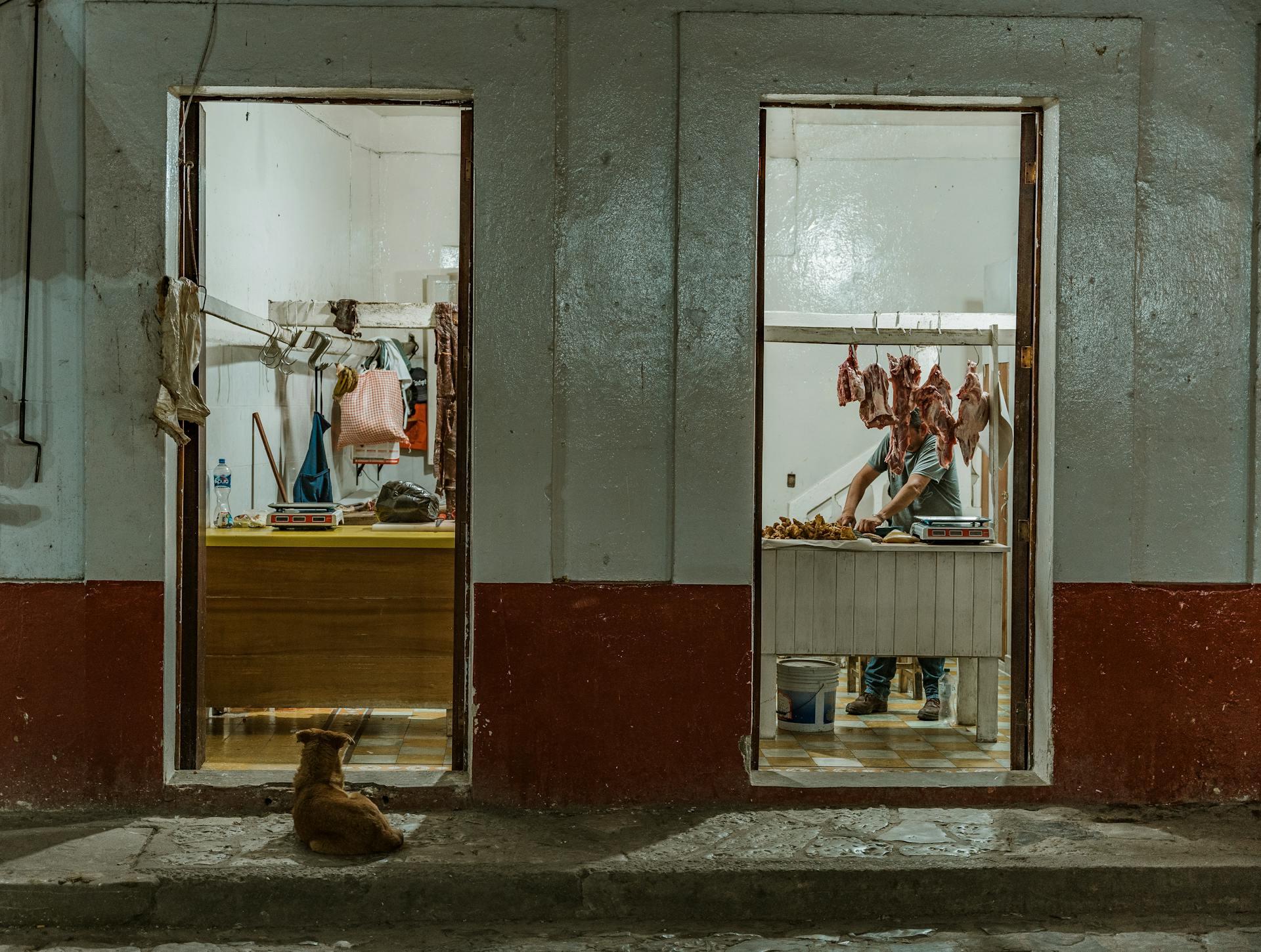
There is no one definitive answer to this question. Some dog owners report that their dog with bloat did indeed poop, while others report that their dog did not. Bloat is a serious condition in which the stomach fills with gas and/or fluid, and can twist on itself, cutting off blood flow. This is a medical emergency that requires immediate veterinary care. If your dog is showing any signs of bloat, such as a distended abdomen, restlessness, drooling, retching without vomiting, or an anxious expression, call your vet immediately and transport your dog to the hospital.
What are the symptoms of bloat in dogs?
Bloat is a condition that can affect dogs of any age, breed, or size. It is a life-threatening emergency that occurs when the stomach twists on itself, trapping gas and fluid inside. The stomach can twist partially or completely, and the condition is also called gastric dilatation-volvulus (GDV). Bloat is a medical emergency and if not treated immediately, it can be fatal.
Symptoms of bloat include:
• A distended, bloated stomach
• Pacing or restlessness
• Excessive drooling
• Unsuccessful attempts to vomit
• Weakness or collapse
If you think your dog is suffering from bloat, it is important to act quickly and bring them to the vet immediately. Bloat is a medical emergency and can kill a dog within hours if not treated. If you suspect your dog is bloating, do not wait to see if the symptoms go away on their own.
Suggestion: What Is for You Will Not Pass You?
What are the causes of bloat in dogs?
Bloat is a very serious condition that can affect dogs of any age, size or breed. It occurs when the stomach fills with gas, fluid or food and then twists on itself. This can cut off the blood supply to the stomach and other organs, and can cause the dog to go into shock. If not treated immediately, bloat can be fatal.
There are many different theories as to what causes bloat, but the most likely cause is a combination of factors. These include genetic predisposition, anatomical factors and dietary factors.
Some dogs are simply more prone to developing bloat than others. This may be due to a combination of genetic factors that make the dog's stomach more likely to twist. Anatomical factors can also play a role. Dogs with deep chests are more likely to develop bloat than those with shallower chests. This is because there is more room for the stomach to twist in a deep-chested dog.
Dietary factors may also contribute to bloat. Dogs that eat one large meal a day are more likely to develop bloat than those that eat several smaller meals. Eating too fast can also increase the risk of bloat. Some experts believe that drinking water immediately after eating can also contribute to bloat.
While the exact cause of bloat is still unknown, there are some things that you can do to help prevent it. If your dog is prone to bloat, feed him several small meals throughout the day instead of one large one. Let him drink water gradually throughout the day instead of all at once. Try to slow down his eating by using a puzzle feeder or slow-feed bowl.
If you think your dog is bloated, it is important to seek veterinary care immediately. Bloat is a medical emergency and can be fatal if not treated.
Worth a look: Water Stop Barking
How can bloat be prevented in dogs?
Bloat is a condition that can affect dogs of any age, breed, or size. It is a serious and potentially life-threatening condition that occurs when the stomach fills with gas and/or fluid. The stomach then rotates (twists), trapping the gas and fluid inside. This can cut off the blood supply to the stomach and other organs, and can cause the stomach to rupture. Bloat can occur very suddenly and can progress rapidly.
There are several things that can be done to help prevent bloat in dogs:
1. Avoid feeding your dog one large meal per day. Instead, divide their daily food intake into smaller meals given throughout the day.
2. Avoid feeding your dog table scraps. These can add to the amount of gas in the stomach and make bloat more likely to occur.
3. Avoid letting your dog exercise immediately before or after eating. This can also add to the amount of gas in the stomach and make bloat more likely to occur.
4. If your dog is prone to bloat, consider feeding them a specially-formulated food that is easy to digest and does not add to the amount of gas in the stomach.
5. Make sure your dog has access to plenty of fresh, clean water at all times. Dehydration can make bloat more likely to occur.
If you think your dog may be bloated, it is important to seek veterinary attention immediately. Bloat is a medical emergency and can be fatal if not treated promptly.
Early recognition and treatment of bloat is essential to the best possible outcome. If you are at all concerned that your dog may be bloated, please do not hesitate to contact your veterinarian or local emergency vet clinic.
Explore further: Blue Buffalo Dog Food
What are the treatment options for bloat in dogs?
There are a number of treatment options for bloat in dogs. The most common approach is to use stomach binding or a stomach wrap to help relieve the gas and pressure in the stomach. This can be followed by a course of antibiotics to help clear the infection. If the dog is dehydrated, fluids may also be given.
If the dog is in distress, thevet may opt for surgery to remove the gas and relieve the pressure. This is a more invasive option with a greater risk of complications, but it may be necessary if the dog is in severe distress. Recovery from surgery will take longer than with the other options.
The best way to prevent bloat is to feed smaller meals more frequently, and to avoid exercise immediately after eating. If your dog is prone to bloat, ask your vet about preventive options such as a stomach wrap or stomach tacking.
What is the prognosis for dogs with bloat?
The prognosis for dogs with bloat is variable. Some dogs may have a single episode and never have another episode, while others may have recurrent episodes. The chances of recurrence are thought to be about 25%. Dogs that have had one episode of bloat are at a higher risk for developing GDV again. The severity of GDV also appears to play a role in the prognosis, with more severe cases having a poorer prognosis. Surgery is the only treatment for GDV, and despite the best medical care, some dogs do not survive. The mortality rate for GDV is thought to be between 5 and 30%.
How long does it take for bloat to develop in dogs?
Bloat is a serious, life-threatening condition that can affect any dog at any age, but it is most common in large, deep-chested breeds. Bloat occurs when the stomach fills with gas and/or twists (torsion), trapping air and fluids inside. The stomach can twist so tightly that blood flow to the heart is cut off. Without prompt medical attention, bloat can be fatal.
The exact cause of bloat is unknown, but there are several theories. One theory is that bloat is caused by a build-up of gas in the stomach. Another theory is that bloat is caused by the stomach twisting (torsion). Torsion can occur when the stomach is filled with food and gas, causing it to twist. This can happen if the dog has eaten a large meal, exercises too soon after eating, or if the dog is under stress.
There are several risk factors for bloat. Large, deep-chested breeds are at highest risk, with some studies showing that up to 60% of Great Danes will experience bloat at some point in their lives. Males are also at higher risk than females. Dogs with a history of bloat are also more likely to experience it again.
Certain medical conditions can increase the risk of bloat, such as gastric dilatation-volvulus (GDV), which is a condition in which the stomach distends and twists. Dogs with GDV are at an increased risk of developing bloat.
There are several things you can do to help prevent bloat. Feeding your dog several small meals per day instead of one large meal can help. Avoiding strenuous exercise immediately after eating can also help. If your dog is prone to bloat, talk to your veterinarian about surgically placing a “gastric balloon” in the stomach, which can help prevent the stomach from twisting.
If you think your dog is bloating, it is important to seek veterinary attention immediately. Bloat is a medical emergency and can be fatal if not treated promptly.
What is the mortality rate for dogs with bloat?
The mortality rate for dogs with bloat is unfortunately quite high. Bloat is a condition that can affect any dog, but it is most commonly seen in deep-chested breeds. It occurs when the stomach fills with gas and/or fluid and then twists, trapping the gas and fluid inside. This can lead to a number of serious problems, including decreased blood supply to the stomach and increased pressure on the diaphragm, which makes it difficult for the dog to breathe. If left untreated, bloat can be fatal.
There are a number of risk factors for bloat, including genetics, age, weight, and diet. Deep-chested breeds are at an increased risk, as are dogs who are older, overweight, or have a history of bloat. Feeding your dog one large meal per day and exercising immediately after eating are also risk factors.
If you suspect your dog is bloated, it is important to seek veterinary attention immediately. Treatment will vary depending on the severity of the condition, but may include stomach decompression, correction of the stomach twist, and/or surgery. The prognosis is generally good if the condition is caught early and treated quickly, but the mortality rate is still high. According to one study, the mortality rate for dogs with bloat is 27%. This means that for every 100 dogs that develop bloat, 27 will die from the condition.
While the mortality rate for dogs with bloat is unfortunately high, there are some things you can do to help prevent it. First, if your dog is at increased risk, talk to your vet about feeding him multiple small meals per day instead of one large one. You should also avoid exercising your dog immediately after eating and make sure he has plenty of room to move around after eating and drinking. Finally, consider using a slow feeder bowl to help prevent bloat. Slow feeders have special designs that make it more difficult for dogs to eat their food too quickly. By using a slow feeder bowl, you can help your dog eat at a slower, more controlled pace, which may help to prevent bloat.
Related reading: Dog Poop Quickly
What breeds of dogs are most susceptible to bloat?
There are many different breeds of dogs that are susceptible to bloat. Some of the most common include the Great Dane, the Saint Bernard, the Bloodhound, and the mastiff. Bloat can also occur in other breeds of dogs, but these are the most susceptible. Bloat is a condition where the stomach fills with gas and air and can rotate or twist. This can cause the dog to experience pain and can be deadly if not treated immediately. There are several things that can contribute to a dog developing bloat including, eating too fast, drinking too much water too fast, exercise after eating, and anxiety.
Great Danes are one of the most susceptible breeds to bloat. This is likely due to their large size. Saint Bernards are also susceptible to bloat. This is likely due to their deep chests which can cause the stomach to twist more easily. Bloodhounds are another breed that is susceptible to bloat. This is likely due to their large size and long ears which can block the passage of air and gas. Mastiffs are also susceptible to bloat. This is likely due to their large size and short noses which can cause them to have trouble breathing and swallowing.
There are several things that you can do to help prevent your dog from developing bloat. You should feed your dog several small meals throughout the day instead of one large meal. You should also avoid letting your dog drink large amounts of water immediately after eating. You should also avoid exercising your dog immediately after eating. And finally, you should try to reduce any stress or anxiety in your dog's life.
Recommended read: Avoid Probate
How can you tell if your dog is at risk for bloat?
Central to the discussion of bloat is the anatomy of the dog's stomach. The stomach of a dog is divided into two main parts: the bodies and the pylorus. The body is the largest part of the stomach and is where food is held and initial digestion takes place. The pylorus is the opening between the stomach and the small intestine. When a dog is bloated, the stomach fills with gas and/or fluid, and the dog's abdomen swells. The gas and fluid put pressure on the stomach walls, and the stomach can twist around the axis of the esophagus (the tube connecting the throat to the stomach). This is a condition called gastric dilatation-volvulus (GDV), and it is life-threatening.
There are several things that can put a dog at risk for bloat: * Anatomy: Deep-chested breeds are more likely to bloat than other breeds. This is because they have a body type that makes them more prone to GDV. * Eating habits: Dogs that eat rapidly or gulp their food are more likely to bloat. This is because they are more likely to swallow air along with their food. * Exercise habits: Dogs that exercise vigorously after eating are more likely to bloat. This is because the physical activity can cause the stomach to twist. * Stress: Dogs that are under stress are more likely to bloat. This is because the stress can cause the stomach to produce more gas.
There are several things that you can do to help prevent bloat in your dog: * Feed your dog several small meals throughout the day instead of one large meal. * Avoid exercise for at least an hour after your dog eats. * Do not allow your dog to gulp his food. Use a slow feeder bowl or puzzle toy to help him eat more slowly. * Try to reduce stress in your dog's life. This may include providing more exercise, attention, and enrichment.
If you think your dog is bloated, it is important to seek veterinary care immediately. GDV is a medical emergency, and the sooner your dog is treated, the better his chances are of recovery.
Broaden your view: How Tight Should a Dog's Collar Be?
Frequently Asked Questions
What happens when a dog has bloat?
A puppy who ingests more air and gas than can be digested within the small intestine will experience abdominal distension, vomiting and diarrhea. If left untreated, this condition can rapidlyprogress to cirrhosis of the liver and even death.
How do you prevent bloat in dogs?
There is no one-size-fits-all answer, but adding probiotics to your dog’s food, being careful about feeding them large chunks of food, avoiding giving them treat that are high in carbohydrates and ensuring they get plenty of water are all good ways to reduce the risk of bloat.
What does bloat in dogs look like on Xray?
There is usually an appearance of fullness in the stomach on Xray and a bubble on the top (known as gas accommodation).
Can bloat in dogs be cured without surgery?
Before surgery, some cases of bloat may be managed with fluids or other treatments. However, surgery is usually required to correct any degree of bloat.
Why is it important to know about canine bloat?
Cranio-scapular torsion is a potentially fatal condition that can occur in dogs when there is too much pressure on the spinal cord or air sacs in the chest. This results in constriction of blood flow around the brain and, as a result, can be life-threatening. Symptoms include vomiting, drooling, paralysis below the neck, seizures and coma. How common is canine bloat? Cranio-scapular torsion is relatively rare in pet dogs and causes only a small percentage (about 2 percent) of all dog deaths each year. However, it is one of the leading causes of death in large breed dogs (such as retrievers, bulldogs and Great Dane), due to their propensity for developing this condition and their high death rate from it.
Sources
- https://www.qualitydogresources.com/will-a-dog-with-bloat-poop/
- https://petdogslove.com/knowledge-base/can-a-dog-with-bloat-still-poop/
- https://blogdigger.com/will-a-dog-with-bloat-poop/
- https://drmartypets.com/bloat-in-dogs/
- https://canna-pet.com/articles/bloat/
- https://www.petfinn.com/blog/articles/bloat-in-dogs
- https://www.pinnacleprotectiondogs.com/bloat-in-dogs-what-is-it-and-how-can-it-be-treated/
- https://www.petsradar.com/advice/what-is-bloat-in-dogs
- https://blog.naivepets.com/will-a-dog-with-bloat-still-want-to-eat-1647082113
- https://www.backyardchickens.com/threads/how-long-for-bloat-symptoms-to-show-in-dogs.487696/
- https://wikidoggia.com/post/how-long-does-bloat-take-to-kill-a-dog
- https://www.akcchf.org/educational-resources/library/articles/understanding-the-mortality.html
- https://www.akc.org/expert-advice/health/bloat/
- https://animalemergencyhospital.net/dog-breeds-with-high-risk-of-bloat/
- https://www.petfinder.com/dogs/dog-health/dog-bloat-breeds-risk/
Featured Images: pexels.com


